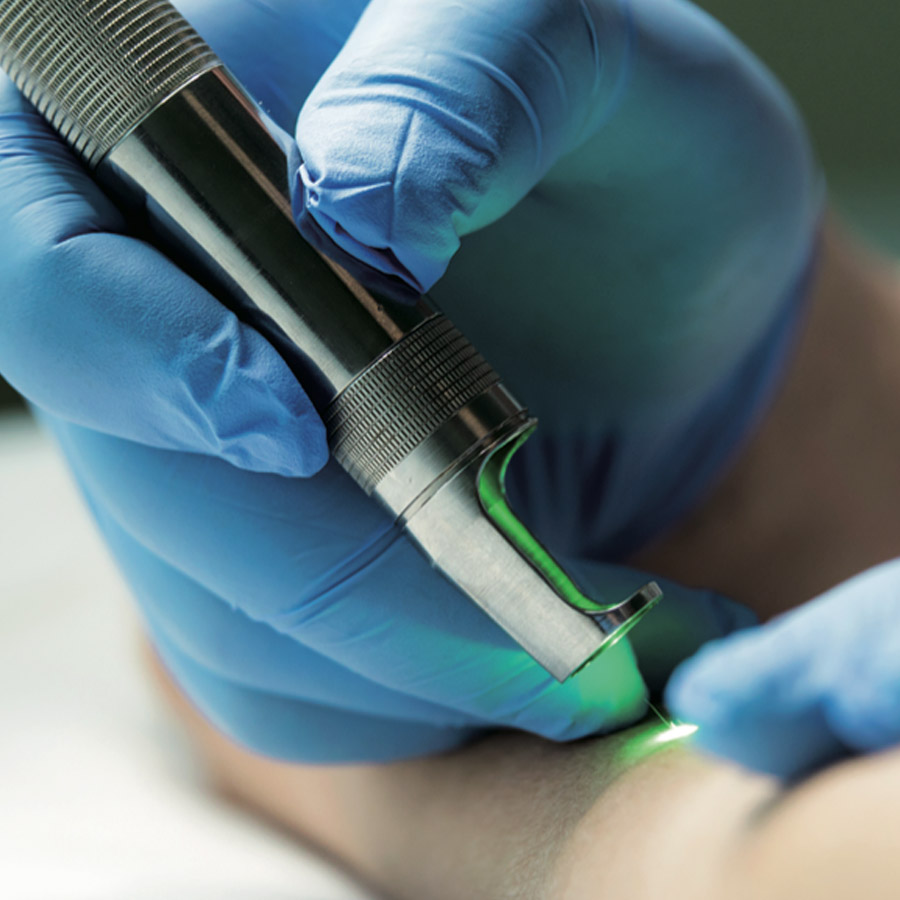Actinic Keratoses (AKs) result from prolonged exposure to the sun and present on the face, neck, ears, and forearms. AKs are precancerous lesions that appear when exposure to sunlight alters cells (keratinocytes) within the outermost layer of skin, the epidermis.
- AKs appear as patches of skin that can become discolored, scaly or rough. They can be flat or slightly raised and can vary in color from pink to brown, or may appear as rough patches. Other symptoms may include burning sensations or itching.
- People with fair skin and light-colored eyes and hair are susceptible to AK development.
- Those with weakened immune systems due to chemotherapy, transplants or immunodeficiency disorders also have an elevated risk for developing AKs.
- AKs are not malignant but have the potential to develop into Squamous Cell Carcinoma, (a form of skin cancer). lf diagnosed and treated early, AKs are not life-threatening, though it is important to have any suspicious lesions checked by a dermatologist.
- AKs may disappear and reappear, so it is necessary to consult your dermatologist even if a suspicious lesion disappears.
Treatment Options
AKs can often be diagnosed based on a visual exam. lf confirmation is necessary, a skin biopsy may be required.
Your medical professional will remove a thin layer of skin containing and surrounding the lesion, most often with the use of a local anesthetic.
A dermatopathologist will then microscopically examine the sample and confirm if the lesion is an АК.
Your dermatologist can offer several options for the treatment of АК including:
Treatment options may vary based оn your age, general health, the size of the lesion and the amount of AKs you have developed.
Reducing the Risk of AK
Avoid overexposure to sunlight. Following sun protection guidelines can help reduce the risks associated with atypical nevus, especially between the hours of 10 am and 4 pm when the sun is directly overhead. It is important to remember that, even on overcast days, damaging ultraviolet rays can pass through clouds. Use caution when around water, sand, and snow because all can reflect the sun’s rays.
Take protective measures.
Wear broad-brimmed hats, tightly-woven clothing, and sunglasses.
Use sunscreen.
Choose a sunscreen with minimum SPF (Sun Protection Factor) of 30 with protection from both UVA and UVB rays. Reapply often on all exposed skin, including the lips.
Always avoid tanning and never use UV tanning beds.
Check your skin regularly.
Examine your entire body, and report any suspicious lesions to your dermatologist.
Self-Examination
- It is essential that you examine your skin once a month. Early detection is necessary for preventing the development of skin cancer.
- Using mirrors, scan your entire body looking for slow-healing sores or areas that continuously itch or are painful. Pay close attention to moles or spots that change in shape, size, or color.
- If you see something unusual, make an appointment with a dermatologist as soon as possible.





